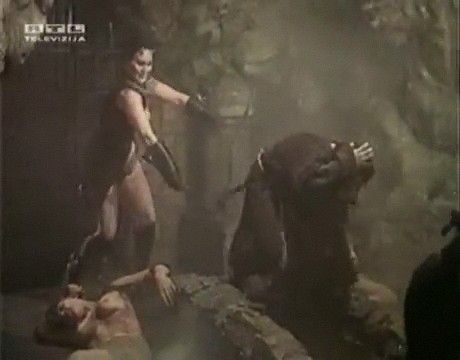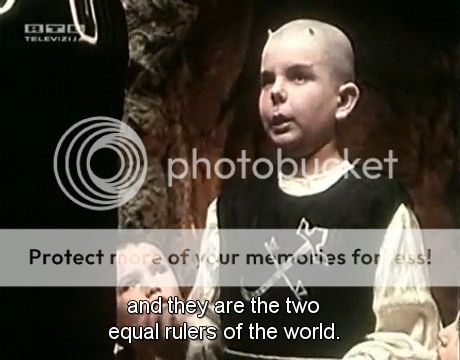The Man to Kill / Čovjek koga treba ubiti : Legenda o caru Šćepanu Malom

- Nota: Esta ficha técnica é complexa, e deu muito trabalho, devido a acontecimentos históricos na ex-Jugoslávia -
País de origem: Jugoslávia (país de então)
Sub-região: Co-produção entre as regiões de Montenegro (país actual) e Croácia (país actual)
Título original em croata: Čovjek koga treba ubiti : Legenda o caru Šćepanu Malom
Título original em sérvio: Човјек кога треба убити
Título inglês internacional: The Man to Kill
Título inglês norte-americano, utilizado para submissão oficial da Jugoslávia, aos óscares da academia de Hollywood, em 1979: The Man to Destroy
Data de lançamento: 29 de Março de 1979 (Jugoslávia)
Realizador: Veljko Bulajić
Género(s): Fantasia, Biográfico, Histórico, Drama
Duração: 106 min
IMDB: http://www.imdb.com/title/tt0169716/
Wikipedia: http://en.wikipedia.org/wiki/The_Man_to_Destroy
Sinopse:
Este filme insólito e original, recorre a elementos de fantasia (inferno cristão), para re-encenar o reinado histórico do Czar Estevão, o Pequeno, que reinou Montenegro entre 1767-1773. Estevão foi um falso Czar, um impostor de origem desconhecida, que usurpou a figura do defunto Czar Pedro III da Rússia, mas que uniu o povo de Montenegro, desprotegido com a morte do Czar da Rússia e a ascenção da Czarina russa Catarina II, contra a ameaça militar do Império Otomano.
Neste filme é feita uma abordagem do género fantástico, com encenação completa do Inferno e sua hierarquia, para especular acerca das origens historicamente misteriosas do Czar impostor, no qual toda a Europa é um tabuleiro de um jogo de estratégia política e militar, entre as forças da Igreja Ortodoxa e o Inferno.
Trailer amador:
Excerto, com encenação do Inferno Cristão:
Prémios:
Pula Film Festival of Yugoslavian Films
1979 - Won Silver Arena - Best Production Design (Veljko Despotovic)
Sitges - Catalonian International Film Festival
1980 - Won Clavel Medalla Sitges en Plata de Ley Dorada - Best Director (Veljko Bulajic )
Entrada oficial da Jugoslávia nos óscares da academia de Hollywood, e rejeitada.
Curiosidades:
Artigo acerca do reinado do Czar impostor Estevão I:
http://en.wikipedia.org/wiki/%C5%A0%C4%87epan_Mali
Resumo em inglês, retirado do artigo acerca dos príncipes-bispos de Montenegro:
"Reign of impostor Stephen the Little
Further information: Šćepan Mali
During Christmas fasting in 1766, after the rumors spread by captain M. Tanović, in Montenegro appeared, supposedly, the Russian tzar Peter III, who was believed to had been murdered by the lovers of Catherine II in 1762. Having affection for Russia, Montenegrins accepted the newcomer as their new tzar (1768) under the name of Stephen the Little (Šćepan Mali). Vladika Sava conveyed to people Russian message that Šćepan is an ordinary crook, but the people believed the tzar rather than Sava. Following this event Šćepan the Little put Sava under house arrest in Stanjevići monastery.
Šćepan the Little was very cruel but respected and feared man during his reign. After realizing how much respect he commands, and that only him can keep Montenegrins together, Russian diplomat Dolgoruki abandoned his efforts to discredit Scepan giving him even financial support (Jagos Jovanovic, Stvaranje Crnogorske drzave i razvoj Crnogorske nacionalnosti, 1947, Obod-Cetinje). In 1771 Šćepan founded the permanent court composed of most respected clan leaders, and stubbornly insisted on respect of the courts decision.
The importance of Šćepan personality in uniting Montenegrins was realized soon after his assassination conducted by order of vizier of Skadar, Mahmut-Pasha Bushatlija. Montenegrin tribes once again engaged into blood feuding among themselves. Mahmut-Pasha Bushatlija tried to seize the opportunity and attacked Kuči with 30 000 troops. For the first time since Vladika Danilo, Kuči were helped by Piperi and Bjelopavlići, and defeated Turks twice in two years.[14]"
Fonte: http://en.wikipedia.org/wiki/Prince-Bishopric_of_Montenegro
Opinião e crítica:
A elaborar mais tarde, em mensagem separada...

- Nota: Esta ficha técnica é complexa, e deu muito trabalho, devido a acontecimentos históricos na ex-Jugoslávia -
País de origem: Jugoslávia (país de então)
Sub-região: Co-produção entre as regiões de Montenegro (país actual) e Croácia (país actual)
Título original em croata: Čovjek koga treba ubiti : Legenda o caru Šćepanu Malom
Título original em sérvio: Човјек кога треба убити
Título inglês internacional: The Man to Kill
Título inglês norte-americano, utilizado para submissão oficial da Jugoslávia, aos óscares da academia de Hollywood, em 1979: The Man to Destroy
Data de lançamento: 29 de Março de 1979 (Jugoslávia)
Realizador: Veljko Bulajić
Género(s): Fantasia, Biográfico, Histórico, Drama
Duração: 106 min
IMDB: http://www.imdb.com/title/tt0169716/
Wikipedia: http://en.wikipedia.org/wiki/The_Man_to_Destroy
Sinopse:
Este filme insólito e original, recorre a elementos de fantasia (inferno cristão), para re-encenar o reinado histórico do Czar Estevão, o Pequeno, que reinou Montenegro entre 1767-1773. Estevão foi um falso Czar, um impostor de origem desconhecida, que usurpou a figura do defunto Czar Pedro III da Rússia, mas que uniu o povo de Montenegro, desprotegido com a morte do Czar da Rússia e a ascenção da Czarina russa Catarina II, contra a ameaça militar do Império Otomano.
Neste filme é feita uma abordagem do género fantástico, com encenação completa do Inferno e sua hierarquia, para especular acerca das origens historicamente misteriosas do Czar impostor, no qual toda a Europa é um tabuleiro de um jogo de estratégia política e militar, entre as forças da Igreja Ortodoxa e o Inferno.
Trailer amador:
Excerto, com encenação do Inferno Cristão:
Prémios:
Pula Film Festival of Yugoslavian Films
1979 - Won Silver Arena - Best Production Design (Veljko Despotovic)
Sitges - Catalonian International Film Festival
1980 - Won Clavel Medalla Sitges en Plata de Ley Dorada - Best Director (Veljko Bulajic )
Entrada oficial da Jugoslávia nos óscares da academia de Hollywood, e rejeitada.
Curiosidades:
Artigo acerca do reinado do Czar impostor Estevão I:
http://en.wikipedia.org/wiki/%C5%A0%C4%87epan_Mali
Resumo em inglês, retirado do artigo acerca dos príncipes-bispos de Montenegro:
"Reign of impostor Stephen the Little
Further information: Šćepan Mali
During Christmas fasting in 1766, after the rumors spread by captain M. Tanović, in Montenegro appeared, supposedly, the Russian tzar Peter III, who was believed to had been murdered by the lovers of Catherine II in 1762. Having affection for Russia, Montenegrins accepted the newcomer as their new tzar (1768) under the name of Stephen the Little (Šćepan Mali). Vladika Sava conveyed to people Russian message that Šćepan is an ordinary crook, but the people believed the tzar rather than Sava. Following this event Šćepan the Little put Sava under house arrest in Stanjevići monastery.
Šćepan the Little was very cruel but respected and feared man during his reign. After realizing how much respect he commands, and that only him can keep Montenegrins together, Russian diplomat Dolgoruki abandoned his efforts to discredit Scepan giving him even financial support (Jagos Jovanovic, Stvaranje Crnogorske drzave i razvoj Crnogorske nacionalnosti, 1947, Obod-Cetinje). In 1771 Šćepan founded the permanent court composed of most respected clan leaders, and stubbornly insisted on respect of the courts decision.
The importance of Šćepan personality in uniting Montenegrins was realized soon after his assassination conducted by order of vizier of Skadar, Mahmut-Pasha Bushatlija. Montenegrin tribes once again engaged into blood feuding among themselves. Mahmut-Pasha Bushatlija tried to seize the opportunity and attacked Kuči with 30 000 troops. For the first time since Vladika Danilo, Kuči were helped by Piperi and Bjelopavlići, and defeated Turks twice in two years.[14]"
Fonte: http://en.wikipedia.org/wiki/Prince-Bishopric_of_Montenegro
Opinião e crítica:
A elaborar mais tarde, em mensagem separada...























